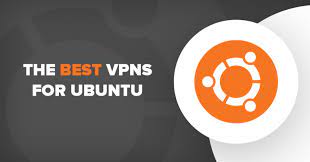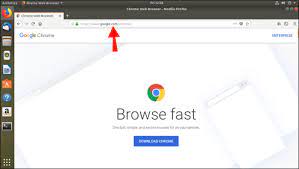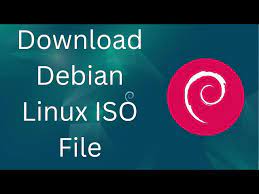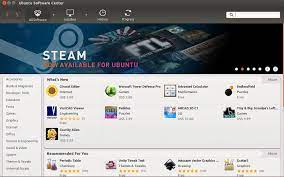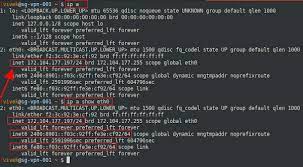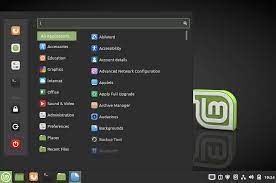Unlocking the Secrets of SEO: A Comprehensive Guide to Search Engine Optimization
The Power of SEO: A Guide to Search Engine Optimization
Search Engine Optimization (SEO) is a crucial digital marketing strategy that aims to improve a website’s visibility in search engine results. In today’s competitive online landscape, having a strong SEO strategy can make all the difference in driving organic traffic to your site and reaching your target audience.
Understanding SEO
SEO involves optimizing various elements of your website to enhance its relevance and authority in the eyes of search engines like Google, Bing, and Yahoo. By implementing SEO best practices, you can increase your website’s chances of ranking higher in search results for relevant keywords and phrases.
The Benefits of SEO
Effective SEO can lead to increased organic traffic, improved user experience, higher conversion rates, and better brand visibility. By appearing at the top of search engine results pages (SERPs), you can attract more qualified leads and establish your website as a credible source of information in your industry.
Key Elements of SEO
- Keyword Research: Identifying relevant keywords that users are searching for.
- On-Page Optimization: Optimizing meta tags, headings, content, and images on individual web pages.
- Off-Page Optimization: Building high-quality backlinks from reputable websites to improve domain authority.
- Technical SEO: Ensuring proper site structure, mobile-friendliness, and fast loading speeds.
- Content Marketing: Creating valuable and engaging content that resonates with your target audience.
The Future of SEO
In an ever-evolving digital landscape, staying ahead of the curve with SEO trends and algorithm updates is essential. Voice search optimization, local SEO strategies, and mobile-first indexing are just a few areas that businesses need to focus on to remain competitive in the online space.
Get Started with SEO Today
If you’re looking to boost your online presence and drive more traffic to your website, investing in a solid SEO strategy is key. Whether you’re a small business owner or a digital marketer, understanding the fundamentals of SEO can help you achieve long-term success in the digital realm.
Six Key Benefits of SEO: Boosting Traffic, Enhancing User Experience, and Elevating Brand Presence
- Increased organic traffic to your website
- Improved user experience and site usability
- Higher visibility and brand awareness in search engine results
- Better targeting of relevant keywords for your target audience
- Enhanced credibility and authority in your industry
- Long-term cost-effective digital marketing strategy
Four Critical Challenges of SEO: Patience, Algorithm Volatility, Continuous Adaptation, and Competitive Keyword Battles
- SEO results can take time to show significant improvements, requiring patience and ongoing effort.
- Algorithm changes by search engines can impact SEO strategies and rankings, leading to fluctuations in website visibility.
- SEO requires constant monitoring and adjustments to keep up with evolving best practices and trends.
- Competitive industries may make it challenging to rank highly for popular keywords, requiring innovative approaches to stand out.
Increased organic traffic to your website
Implementing a robust SEO strategy can lead to a significant pro: increased organic traffic to your website. By optimising your site for search engines and targeting relevant keywords, you can attract more visitors who are actively searching for the products or services you offer. This boost in organic traffic not only enhances your online visibility but also brings in qualified leads, ultimately driving growth and success for your business in the digital realm.
Improved user experience and site usability
One of the key benefits of SEO is the enhancement of user experience and site usability. By implementing SEO best practices such as optimizing website structure, improving page loading speed, and creating relevant and engaging content, websites can provide visitors with a seamless and enjoyable browsing experience. A well-optimized site not only ranks higher in search engine results but also ensures that users can easily navigate, find information quickly, and ultimately have a positive interaction with the website. This focus on user experience not only benefits visitors but also contributes to increased engagement, lower bounce rates, and ultimately better conversion rates for businesses.
Higher visibility and brand awareness in search engine results
Achieving higher visibility and brand awareness in search engine results is a significant advantage of SEO. By optimising your website for relevant keywords and implementing effective SEO strategies, your website can appear at the top of search engine results pages (SERPs), increasing the likelihood of users clicking through to your site. This heightened visibility not only drives organic traffic but also enhances brand recognition and credibility, as users are more likely to trust and engage with websites that rank prominently in search results. Ultimately, leveraging SEO to boost visibility can lead to greater brand exposure and awareness among your target audience, helping you establish a strong online presence and stand out in a competitive digital landscape.
Better targeting of relevant keywords for your target audience
Search Engine Optimization (SEO) offers the valuable benefit of enabling better targeting of relevant keywords for your target audience. By conducting thorough keyword research and strategically incorporating these keywords into your website’s content, meta tags, and headings, you can increase the visibility of your site in search engine results for specific terms that are relevant to your business or industry. This targeted approach not only helps attract more qualified traffic to your website but also ensures that you are reaching the right audience who are actively searching for the products or services you offer. Ultimately, by optimising for relevant keywords, SEO can significantly enhance your online presence and connect you with potential customers who are most likely to convert.
Enhanced credibility and authority in your industry
Implementing a strong SEO strategy can significantly enhance the credibility and authority of your brand within your industry. By consistently appearing at the top of search engine results pages for relevant keywords, you establish your website as a trusted source of information. This visibility not only attracts more organic traffic but also instils confidence in potential customers and clients, positioning your business as a reputable leader in your field. As users repeatedly encounter your brand at the forefront of search results, they are more likely to perceive your business as knowledgeable, reliable, and authoritative, ultimately fostering greater trust and loyalty among your target audience.
Long-term cost-effective digital marketing strategy
Search Engine Optimization (SEO) stands out as a long-term, cost-effective digital marketing strategy that yields sustainable results over time. By investing in SEO, businesses can establish a strong online presence and attract organic traffic without incurring significant ongoing expenses. Unlike paid advertising campaigns that require continuous funding, SEO focuses on improving website visibility and ranking through strategic content creation, keyword optimization, and link building. This proactive approach not only enhances brand credibility but also ensures a steady flow of relevant traffic, making SEO a valuable investment for businesses looking to achieve lasting success in the competitive digital landscape.
SEO results can take time to show significant improvements, requiring patience and ongoing effort.
One notable drawback of SEO is the time it takes to see substantial improvements in search engine rankings and organic traffic. Implementing SEO strategies and waiting for results can be a test of patience, as the impact of changes made to a website may not be immediately evident. Consistent effort and ongoing optimization are necessary to achieve lasting success with SEO, making it a long-term investment that requires dedication and perseverance.
Algorithm changes by search engines can impact SEO strategies and rankings, leading to fluctuations in website visibility.
One significant drawback of SEO is the susceptibility to algorithm changes implemented by search engines, such as Google. These alterations can have a profound impact on SEO strategies and website rankings, resulting in unpredictable fluctuations in website visibility. What may have been an effective approach one day could potentially become less effective or even detrimental the next, making it challenging for businesses to maintain consistent search engine visibility and traffic levels. Adapting to these frequent algorithm changes requires constant monitoring, flexibility, and a willingness to adjust SEO strategies accordingly to mitigate the negative effects on website performance.
SEO requires constant monitoring and adjustments to keep up with evolving best practices and trends.
One significant drawback of SEO is the continuous need for monitoring and adjustments to align with the ever-changing best practices and trends. As search engine algorithms evolve and user behaviour shifts, staying ahead in the SEO game demands constant vigilance and adaptation. This ongoing process of monitoring and tweaking strategies can be time-consuming and resource-intensive, posing a challenge for businesses aiming to maintain a competitive edge in the dynamic digital landscape.
Competitive industries may make it challenging to rank highly for popular keywords, requiring innovative approaches to stand out.
In highly competitive industries, the challenge of ranking highly for popular keywords can be a significant drawback of SEO. With numerous businesses vying for visibility in search engine results, traditional SEO tactics may not always suffice. Innovative approaches and unique strategies are essential to differentiate oneself and stand out amidst the competition. This fierce competition necessitates constant adaptation and creativity to effectively navigate the complexities of SEO in crowded market spaces.




